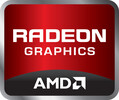Intel UHD Graphics P630 vs AMD Radeon R9 M365X vs Intel HD Graphics P630
Intel UHD Graphics P630
► remove from comparison
The Intel UHD Graphics P630 (GT2) is a professional integrated graphics card, which can be found in various Xeon desktop and notebook processors of the Coffee-Lake generation. The "GT2" version of the GPU offers 24 Execution Units (EUs) and the clocks depend on the CPU model. Due to its lack of dedicated graphics memory or eDRAM cache, the UHD P630 has to access the main memory (2x 64-bit DDR3L-1600 / DDR4-2133). Compared to the older HD Graphics P630 (Kaby-Lake), the newer UHD GPU is identical but can be clocked slightly higher. Compared to the regular UHD 630, the P630 supports ECC main memory and is intended for professional applications.
Performance
The exact performance of the UHD Graphics P630 depends on various factors like TDP, L3 Cache, memory (DDR3/DDR4) and maximum clock rate of the specific model. However, it should be fairly similar to the HD Graphics 530 and HD Graphics 630 and therefore only suited for low demanding games like Overwatch or Farming Simulator 2017 (low details).
Features
The features of the UHD P630 are the same as for the HD 630 and therefore H.265/HEVC Main10 profile at 10-bit color depth are supported in hardware. Furthermore, HDCP 2.2 is also supported in all chips, which allows Netflix 4K videos, for instance. HDMI 2.0 however is still only supported with an external converter chip (LSPCon).
Power Consumption
The UHD Graphics P630 can be found in several notebook and desktop processors of different TDP classes.
AMD Radeon R9 M365X
► remove from comparison
The AMD Radeon R9 M365X is a mid range DirectX 12 compatible graphics card for laptops. It is based on the GCN architecture and manufactured in 28nm. The older Radeon R9 M270 and the current Radeon R9 M370X are very similar (see for gaming benchmarks).
The R9 M365X uses 640 shader cores (10 compute units) clocked at 925 MHz (max.) and supports according to the AMD website 4 GB GDDR5 at 1125 MHz (4 GHz effective). The only used version in a Toshiba laptop so far however only uses 2 GB GDDR5.
Intel HD Graphics P630
► remove from comparison
The Intel HD Graphics P630 (GT2) is an integrated graphics unit, which can be found in various Xeon workstation processors of the Kaby Lake generation. The "GT2" version of the Skylake GPU offers 24 Execution Units (EUs) clocked at up to 1050 MHz (depending on the CPU model). Due to its lack of dedicated graphics memory or eDRAM cache, the P630 has to access the main memory (2x 64bit DDR3L-1600 / DDR4-2133). It uses the same silicon as the consumer HD Graphics 630 in Kaby-Lake-H processors but features optimized drivers for workstaion and CAD software. According to Intel it is certified for 15 applications (see list).
Performance
According to Intel, the performance of the P630 is identical to the Intel HD Graphis P530 (Skylake predecessor) processor graphics card and 1.94x faster than the old Intel HD Graphics P4000. Compared to consumer cards, the gaming performance should be on a similar level to the dedicated GeForce 920M and will handle old games (as of 2015) in low or medium settings.
Features
The revised video engine in the Kaby Lake chips now supports H.265/HEVC Main10 profile at 10-bit color depth and also the VP9 codec in hardware. Furthermore, HDCP 2.2 is also supported in all chips, which allows Netflix 4K videos, for instance.
Power Consumption
The HD Graphics P630 can be found in mobile quad-core Xeon processors with 45 W TDP and also desktop processors of the Xeon range with higher TDPs.
Source: http://www.intel.com/content/dam/www/public/us/en/documents/guides/hd-graphics-performance-guide.pdf
| Intel UHD Graphics P630 | AMD Radeon R9 M365X | Intel HD Graphics P630 | |||||||||||||||||||||||||||||||||||||||||||||||||||||||||||||||||||||||||||||||||||||||||||||||||||||||||||||
| Gen. 9.5 Series |
|
|
| ||||||||||||||||||||||||||||||||||||||||||||||||||||||||||||||||||||||||||||||||||||||||||||||||||||||||||||
| Codename | Coffee-Lake-GT2 | Kaby-Lake-H-GT2 | |||||||||||||||||||||||||||||||||||||||||||||||||||||||||||||||||||||||||||||||||||||||||||||||||||||||||||||
| Architecture | Gen. 9.5 | GCN | Gen. 9.5 Kaby Lake | ||||||||||||||||||||||||||||||||||||||||||||||||||||||||||||||||||||||||||||||||||||||||||||||||||||||||||||
| Pipelines | 24 - unified | 640 - unified | 24 - unified | ||||||||||||||||||||||||||||||||||||||||||||||||||||||||||||||||||||||||||||||||||||||||||||||||||||||||||||
| Core Speed | 300 - 1200 (Boost) MHz | 900 - 925 (Boost) MHz | |||||||||||||||||||||||||||||||||||||||||||||||||||||||||||||||||||||||||||||||||||||||||||||||||||||||||||||
| Memory Bus Width | 64/128 Bit | 128 Bit | 64/128 Bit | ||||||||||||||||||||||||||||||||||||||||||||||||||||||||||||||||||||||||||||||||||||||||||||||||||||||||||||
| Shared Memory | yes | no | yes | ||||||||||||||||||||||||||||||||||||||||||||||||||||||||||||||||||||||||||||||||||||||||||||||||||||||||||||
| API | DirectX 12_1, OpenGL 4.4 | DirectX 12, Shader 5.0, OpenGL 4.4 | DirectX 12_1, OpenGL 4.4 | ||||||||||||||||||||||||||||||||||||||||||||||||||||||||||||||||||||||||||||||||||||||||||||||||||||||||||||
| technology | 14 nm | 28 nm | 14 nm | ||||||||||||||||||||||||||||||||||||||||||||||||||||||||||||||||||||||||||||||||||||||||||||||||||||||||||||
| Features | QuickSync | Mantle, PCIe 3.0, Zero Core, PowerTune | QuickSync | ||||||||||||||||||||||||||||||||||||||||||||||||||||||||||||||||||||||||||||||||||||||||||||||||||||||||||||
| Date of Announcement | 01.10.2017 | 06.05.2015 | 05.08.2015 | ||||||||||||||||||||||||||||||||||||||||||||||||||||||||||||||||||||||||||||||||||||||||||||||||||||||||||||
| Memory Speed | 4500 MHz | ||||||||||||||||||||||||||||||||||||||||||||||||||||||||||||||||||||||||||||||||||||||||||||||||||||||||||||||
| Memory Type | GDDR5 | ||||||||||||||||||||||||||||||||||||||||||||||||||||||||||||||||||||||||||||||||||||||||||||||||||||||||||||||
| Max. Amount of Memory | 4 GB | ||||||||||||||||||||||||||||||||||||||||||||||||||||||||||||||||||||||||||||||||||||||||||||||||||||||||||||||
| Notebook Size | medium sized |
|
| |||||||||||||||||||||||||||||||||||||||||


 Deutsch
Deutsch English
English Español
Español Français
Français Italiano
Italiano Nederlands
Nederlands Polski
Polski Português
Português Русский
Русский Türkçe
Türkçe Svenska
Svenska Chinese
Chinese Magyar
Magyar